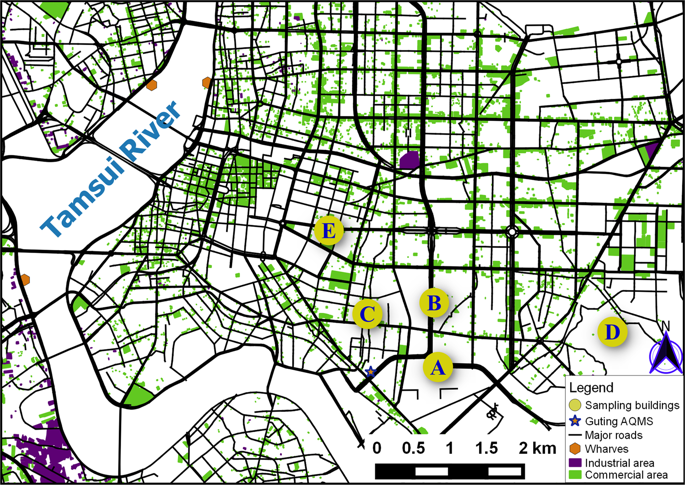Journal of Exposure Science and Environmental Epidemiology ( IF 4.1 ) Pub Date : 2019-06-21 , DOI: 10.1038/s41370-019-0153-2 Ho-Tang Liao , Jung-Chi Chang , Tzu-Ting Tsai , Shih-Wei Tsai , Charles C.-K. Chou , Chang-Fu Wu

|
Receptor models have been widely used for identifying and quantifying source-specific contributions from mixtures of air pollutants. Nonetheless, our knowledge is still limited on how various components of air pollution are vertically distributed and the sources of such pollutants. In this study, we collected 135 samples of PM2.5 (particles with aerodynamic diameter less than or equal to 2.5 µm) from building balconies at three altitudes in the metropolis of Taipei (Taiwan) and analyzed the samples for elements and polycyclic aromatic hydrocarbons that could be used to identify the sources of those pollutants. We used positive matrix factorization (PMF) to identify seven likely sources, including combustion, sulfur-rich aerosol, fresh traffic, industry/Cr-rich, oil combustion/vehicle, dust, and traffic. Although PM2.5 mass differed significantly between low-level and mid-level sites, the largest contributor to PM2.5 mass (sulfur-rich aerosol, 35.2%) showed nonsignificant variation in the vertical distribution. In contrast, oil combustion/vehicle, which exhibited significant difference between mid-level sites and the other two altitudes, might be a determinant in the vertical variation of PM2.5. We also observed negative trends with sampling height for combustion and traffic emissions.











































 京公网安备 11010802027423号
京公网安备 11010802027423号